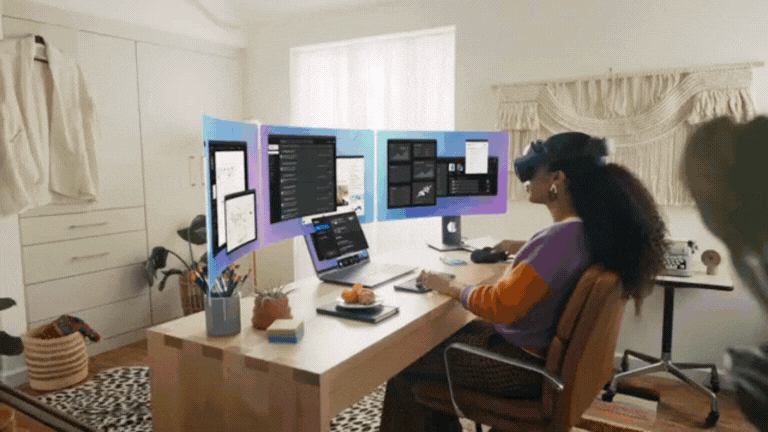No, simulation is not a game. And no, we are not just building simulations, at least not exclusively.
We’ve all seen these videos: Meta showcases its new workroom, and their vision of the future of work (via Quest headsets, of course). And Apple unveils its highly anticipated entry into the world of immersive experiences.
But are these simulations? Or games?
There are various definitions of simulation – the one I like the most: “Central representations of a system.” The simulation doesn’t have to replicate everything because the territory is not the map. Otherwise, it becomes useless. But are these products/services vying to enter the daily lives of billions of people really “just” simulations?
They are not games, that’s for sure.
Because, especially at work, the word “game” is always a problem. Those who work want to be taken seriously. “I work, I’m not playing here,” how many times have we heard that? From “games,” these big players have borrowed certain elements. Such as the use of avatars, leaderboards, collaboration, and/or competition dynamics. Pointing and rewards mechanics, badging, and even realistic facial expressions and gestures we are accustomed to.
Simulations and games according to Gameful
At Gameful, we’ve built several hybrid products between simulation and game. Simulations for truck and transportation operations in general, road safety simulations, and car safety simulations. For example, we’ve created various experiences to demonstrate the distance to maintain between one car and another or the various types of cars and the difference in driving styles. Each car has different characteristics and potential hazards to experience during the simulation.
With trucks, we’ve been able to simulate various truck models and features, such as refrigerated trucks with different compartments and temperatures. We’ve simulated different trucks and their braking capabilities, their black box, and the so-called eco-friendly driving – becoming increasingly relevant.
Are they games or simulations? Or something else?
Here too, the answer is a bit of both because, for games, we’ve only used certain components like indicators, leaderboards, competition, and collaboration dynamics. As for the simulation, the “central elements of the system” are represented by the vehicles: cars, trucks, buses, refrigerated trucks—their shapes, their functioning, and, of course, the training rules, the rules to be respected and communicated. Corporate simulations also adhere to this new mix of elements to simulate and engagement elements. In a company, there are business processes, products, flows, and corporate “rituals” to respect and “simulate.” Each company is a world in itself with which to interface to absorb these “hard items” that represent the core of the simulation – in this case, corporate. These “core” elements need to be linked to engagement elements to create the simulation/game mentioned above. Companies are made up of people, and people engage at various levels but with the same components. A company may be interested in engaging its workforce, another may want to engage its most relevant corporate clients and prospects, and yet another may be interested in engaging corporate stakeholders, and so on.
Even though I don’t like to pigeonhole, we have to try. They are not and will not be “just” simulations. They are not and will not be “games.” What are they then? A new path. One that lies in between the two.

